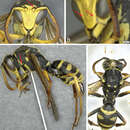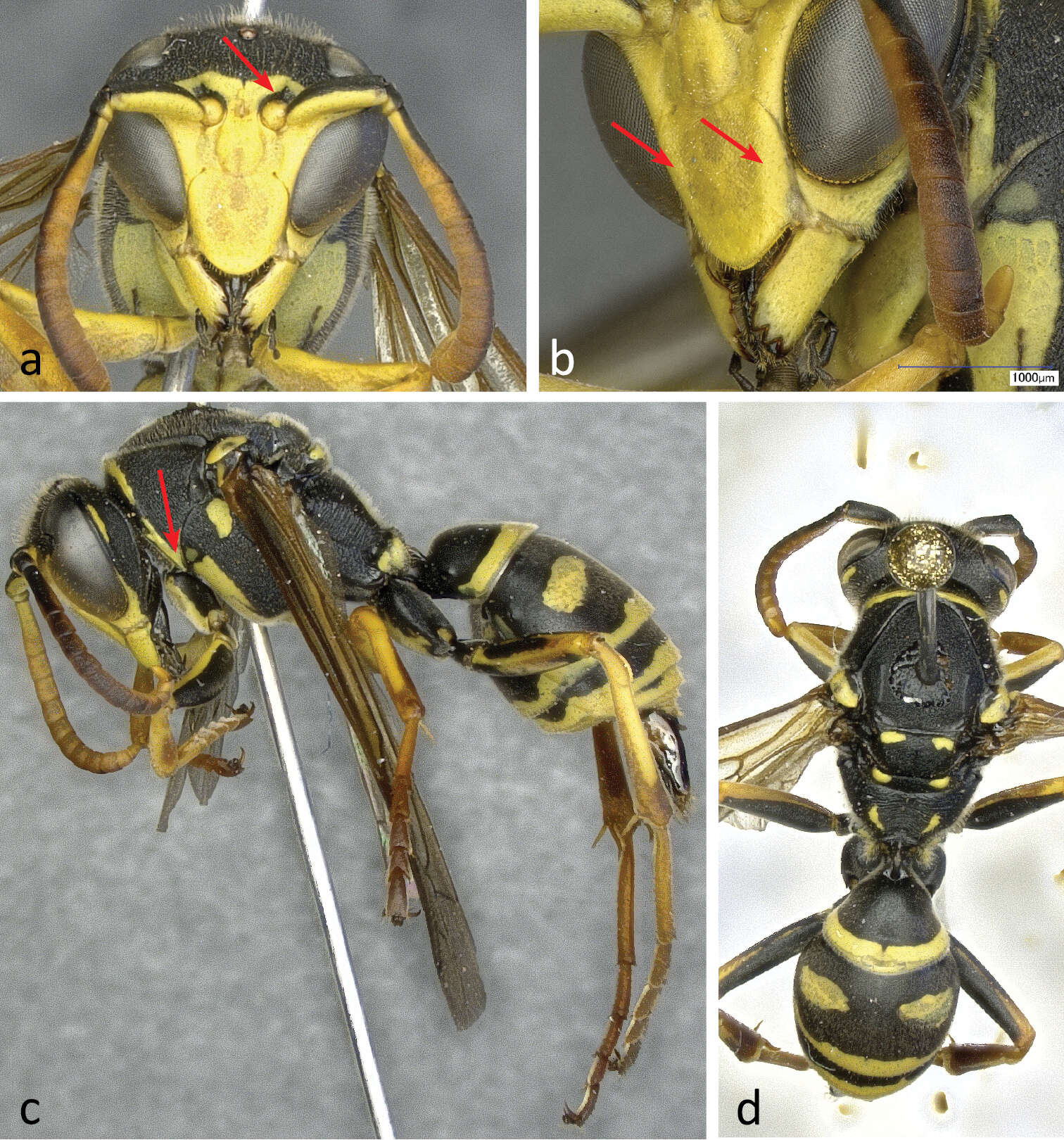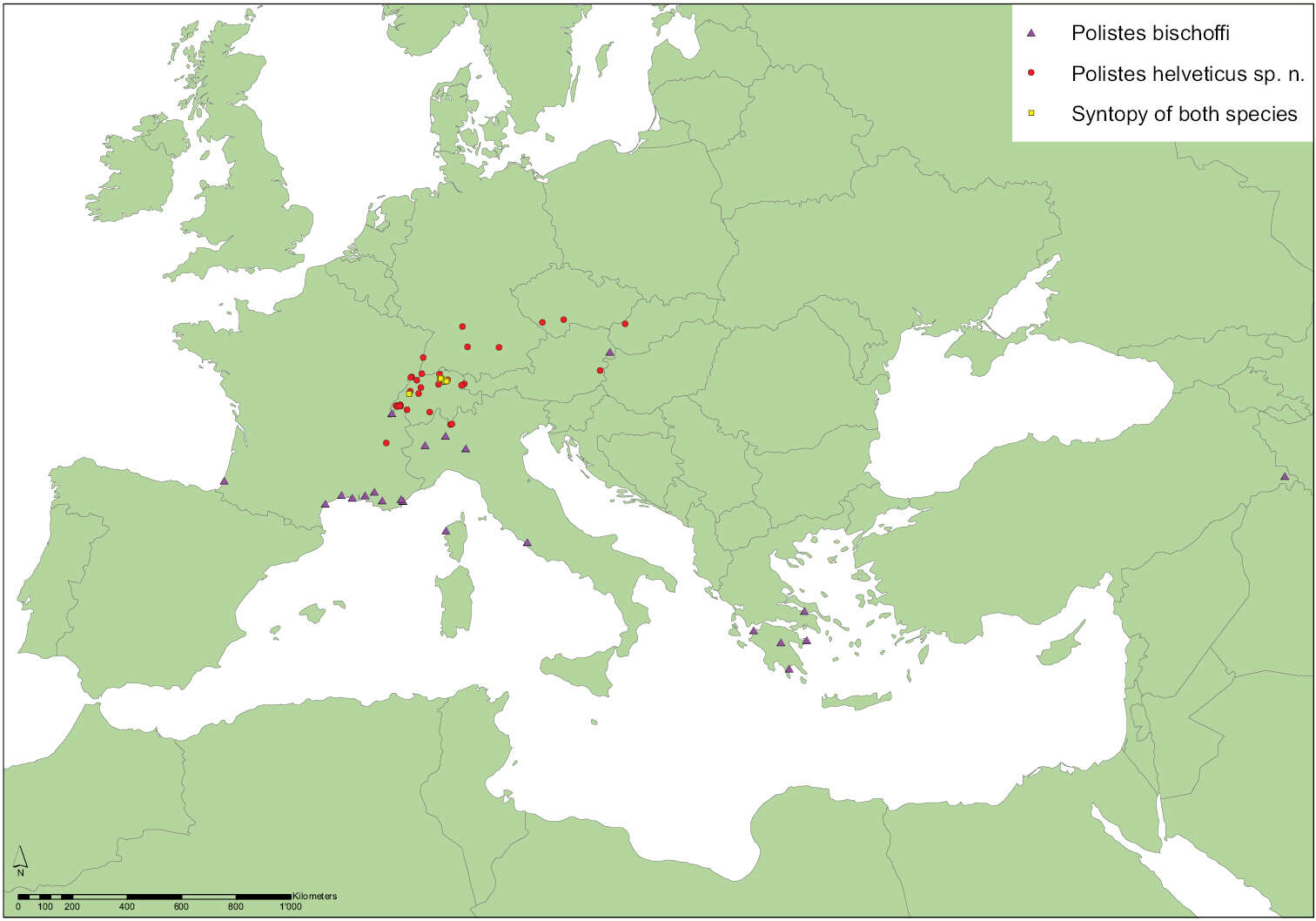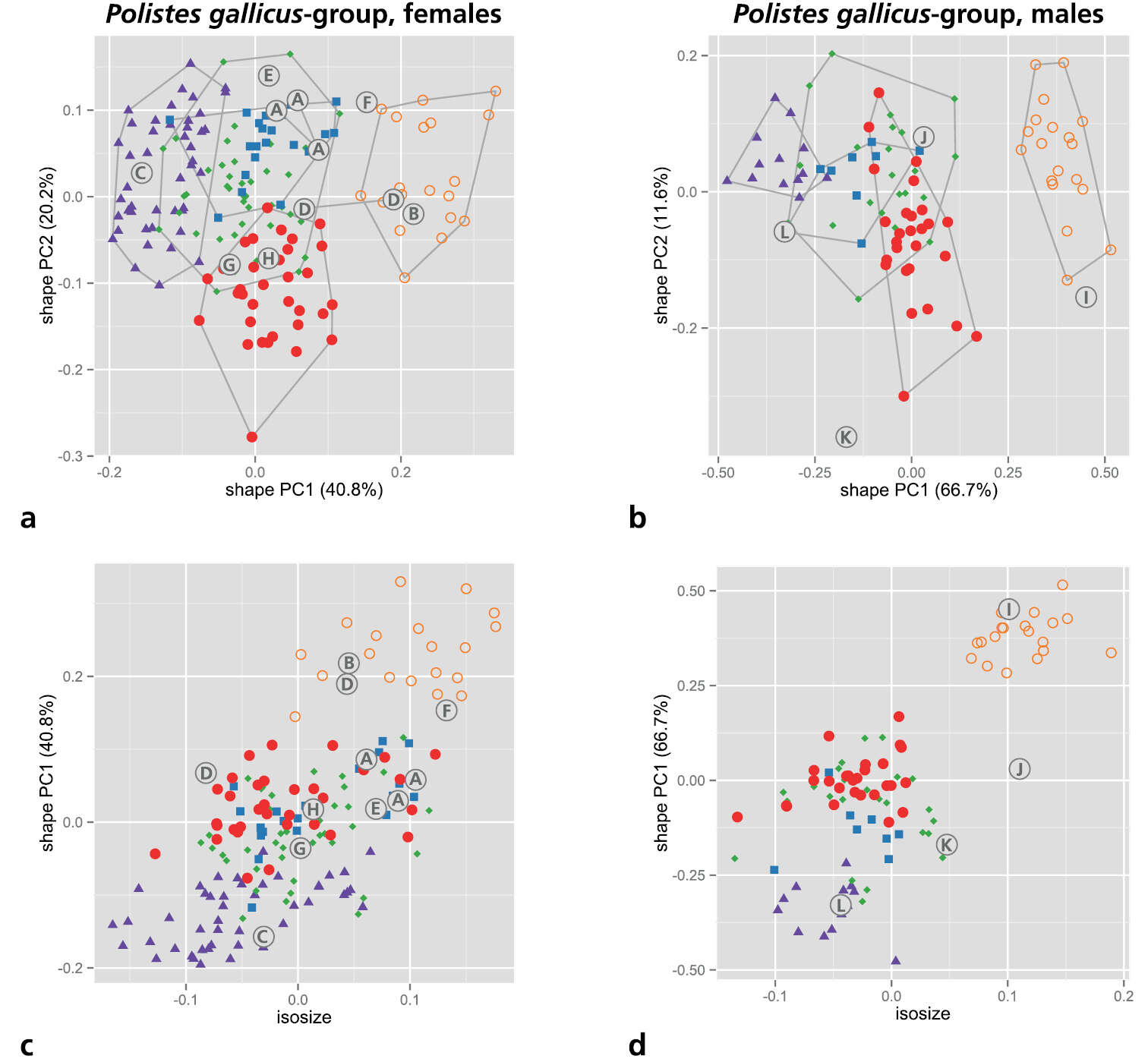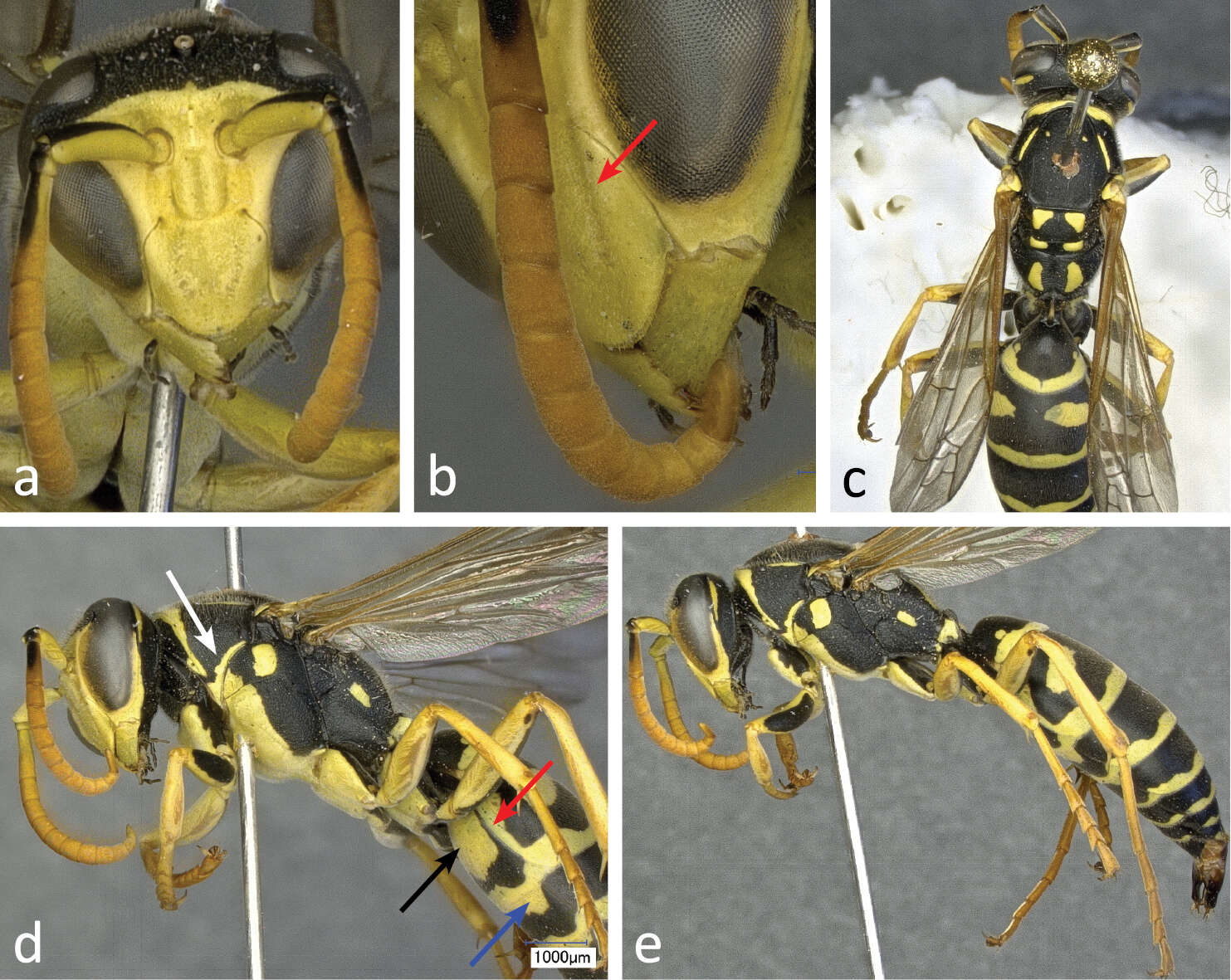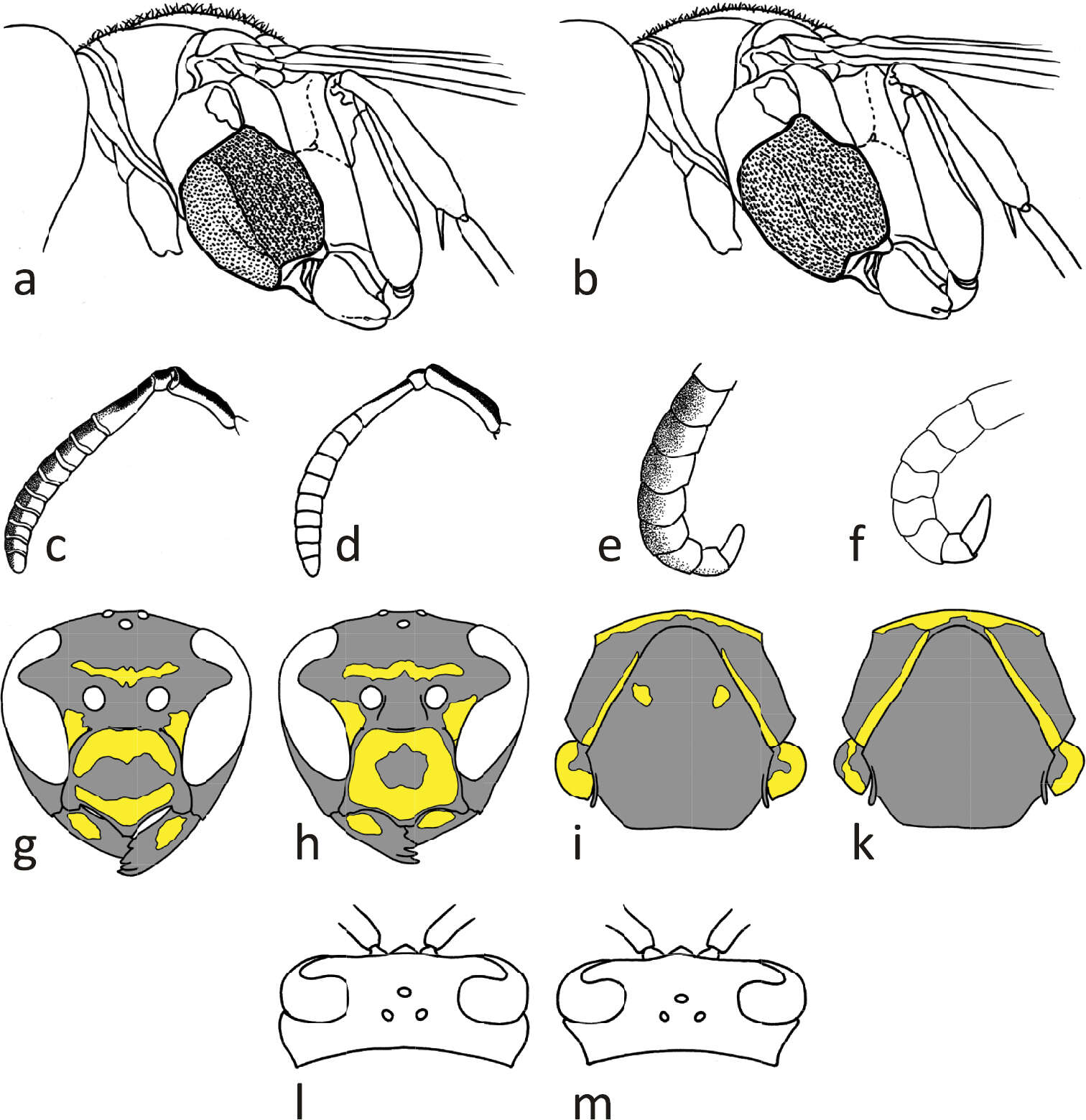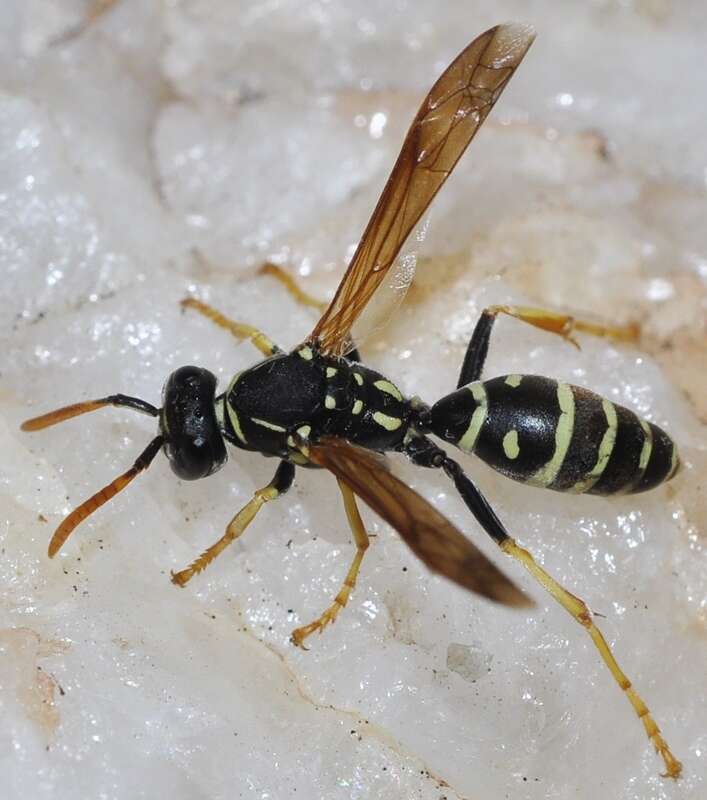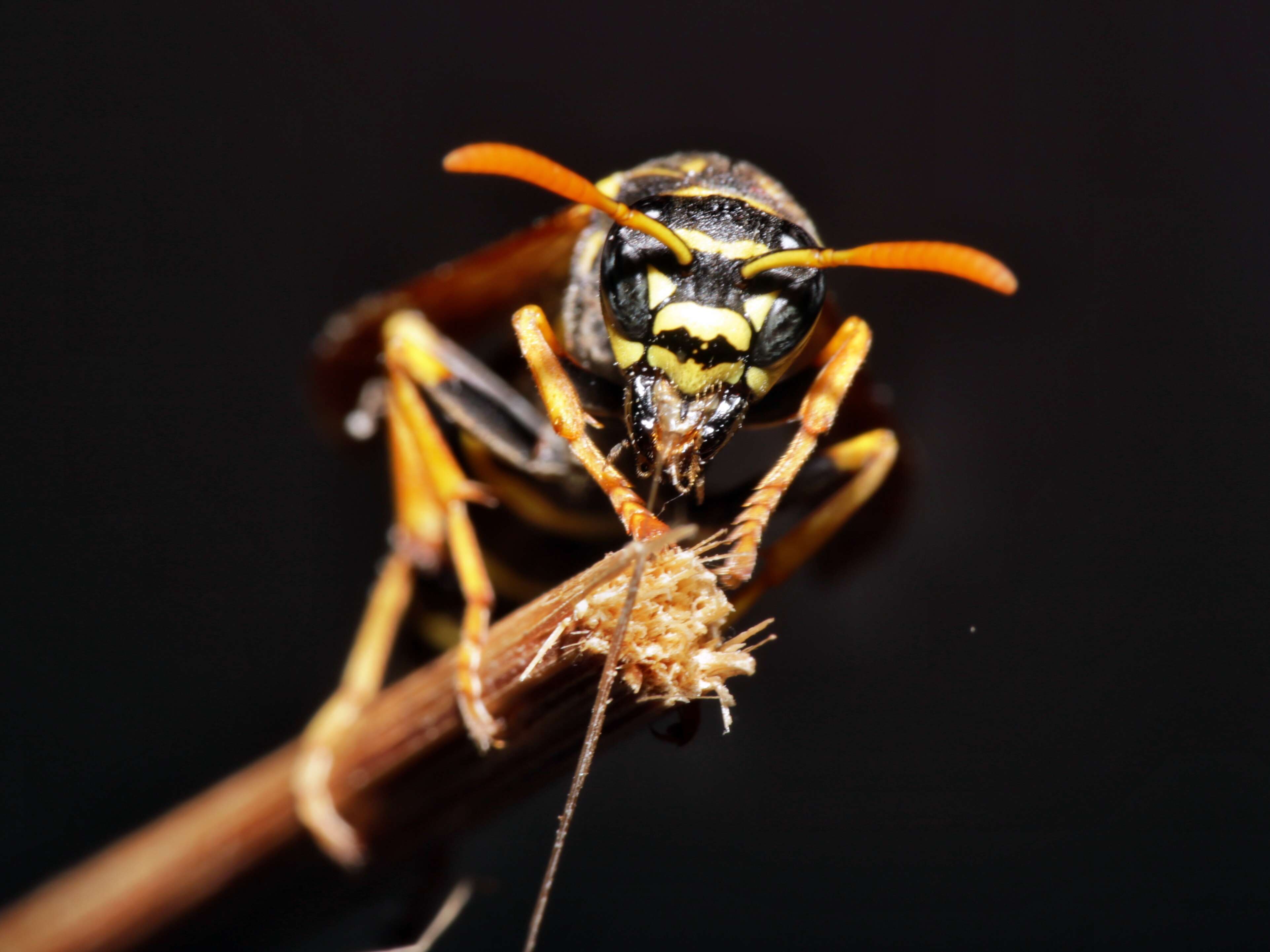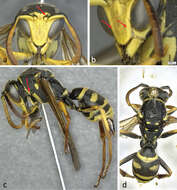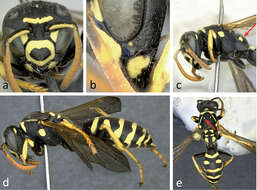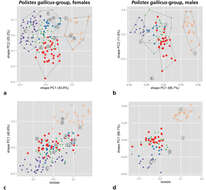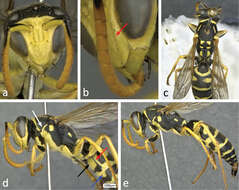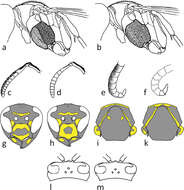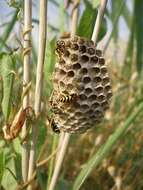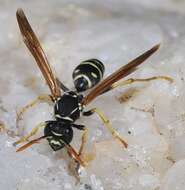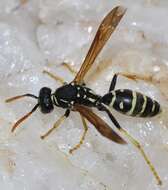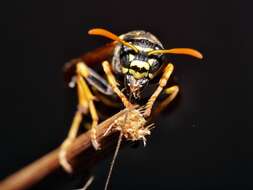-
Rainer Neumeyer, Hannes Baur, Gaston-Denis Guex, Christophe Praz
Zookeys
Figure 10.Different aspects of a male (individual RN0153) of Polistes helveticus sp. n.: a frontal view of head b anterolateral view of lower face c lateral view of body d dorsal view of body. The arrows are pointing to the isolated black area (a) bordering the torulus, the very faint lateral ridges of clypeus (b) or the ventrolateral angle of the pronotum (c).
-
Rainer Neumeyer, Hannes Baur, Gaston-Denis Guex, Christophe Praz
Zookeys
Figure 11.Distribution of examined specimens of Polistes bischoffi Weyrauch, 1937 and Polistes helveticus sp. n. While Polistes bischoffi mainly occurs from Southern Europe to Western Asia, Polistes helveticus appears to have a more northern distribution in Central Europe. Thus far, the only incidences of syntopy (Polistes bischoffi, Polistes helveticus) are from Switzerland.
-
Rainer Neumeyer, Hannes Baur, Gaston-Denis Guex, Christophe Praz
Zookeys
Figure 6.Different aspects of a female (specimen RN0137) of Polistes bischoffi Weyrauch, 1937: a frontal view of head b lateral view of lower face with malar space and mandible c lateral view of head and mesosoma d lateral view of body e body from above. Arrows indicate the yellow patch on the lateral part of propodeum (c) and one of two yellow spots on the mesoscutum (e).
-
Rainer Neumeyer, Hannes Baur, Gaston-Denis Guex, Christophe Praz
Zookeys
Figure 3.Shape PCA of all five OTUs of the Polistes gallicus-group. a, b Scatterplot of first against second shape PC a females b males c, d Scatterplot of isosize against first shape PC c females d males. Symbols: orange circles = Polistes biglumis, purple triangles = Polistes bischoffi, green diamonds = Polistes gallicus, blue rectangles = Polistes hellenicus, red dots = Polistes helveticus. In parentheses, the variance explained by each shape PC. Encircled upper case letters show the position of the type specimens of various nominal taxa: (A) Polistes bimaculatus pamirensis Zirngiebl, 1955, syntypes; (B) Polistes bimaculatus nigrinotum Zirngiebl, 1955, holotype; (C) Polistes bischoffi Weyrauch, 1937, neotype; (D) Polistes foederatus obscuricornis Mader, 1936, syntypes; (E) Polistes omissus ordubadensis Zirngiebl, 1955, holotype; (F) Polistes omissus kaszabi Giordani Soika, 1970, holotype; (G) Polistes foederatus albellus Giordani Soika, 1976, paratype; (H) Polistes helveticus Neumeyer sp. n., holotype; (I) Polistes dubius Kohl, 1898, lectotype; (J) Polistes foederatus Kohl, 1898, holotype; (K) Polistes gallicus mongolicus Buysson, 1911, syntype; (L) Polistes hellenicus Arens, 2011, holotype.
-
Rainer Neumeyer, Hannes Baur, Gaston-Denis Guex, Christophe Praz
Zookeys
Figure 7.Different aspects of a male (specimen RN0151) of Polistes bischoffi Weyrauch, 1937: a frontal view of head b lateral view of lower face with malar space and mandible c dorsal view of body d lateral view of head, mesosoma, and base of metasoma e lateral view of body. The red arrow in b is pointing to the faint lateral ridge on clypeus. In d the white arrow is pointing to the yellow ventrolateral stripe of the pronotum, the red arrow to the lateral extension of terminal band on tergum 2, the black arrow to a large yellow spot on sternum 2 and the blue arrow on the yellow basal band of sternum 3.
-
Rainer Neumeyer, Hannes Baur, Gaston-Denis Guex, Christophe Praz
Zookeys
Figure 12.Drawings of morphological characters used in the key to European paper wasps (Polistes) of the gallicus-group: Mesopleuron with abrupt (a) or gradual (b) sculpture change; female antennae with dark (c) or bright (d) upper side of flagellomeres; male apical flagellum dark (e) or bright (f) on upper side; head in frontal view with black band across clypeus (g) or isolated black spot (h); apical mesosoma in dorsal view with drop-shaped spots on mesoscutum, posterior pronotal stripes ending far from pronotal carina (i) or without drop-shaped spots, pronotal stripes approaching pronotal carina (k); head in dorsal view with genae convex (l) or immediately narrowing (m). Drawings a, b, c, d, f are courtesy of H. Cigler, g, h, i, k of D. Lawniczak, and e, l, m of CSCF.
-
-
-
-
Rolf Dietrich Brecher|sourceurl=https://flickr.com/photos/104249543@N07/14611998215%7Carchive=https://web.archive.org/web/20200611115326/https://www.flickr.com/photos/104249543@N07/14611998215%7Creviewdate=2019-09-01 14:08:35|reviewlicense=cc-by-2.0|reviewer=FlickreviewR 2
Wikimedia Commons

